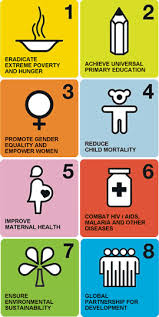The New Bottom Billion: The Future Beyond Millennium Development Goals

This post was produced for the Global Economic Symposium 2013 to accompany a session on “Development Policies for the New Bottom Billion.” Read more on http://blog.global-economic-symposium.org/.
There is something remarkable about the Millennium Development Goals (MDGs) – that they were actually agreed on in the first place. Despite the complexity of the United Nations decision-making system and the continuous debate on how to achieve aid effectiveness, during the Millennium Summit, all 193 UN countries agreed to be active agents in a global movement to make human development happen.
All high-, middle-, and low-income countries had to look at their own development progress and draft appropriate human-orientated development strategies. For once international development was no longer limited to a North-to-South aid donation. The MDG mobilized everyone for action. This is particularly important when we consider that most of the world’s poverty is found in middle- rather than low-income countries, and thus traditional development assistance does not reach the New Bottom Billion any longer.

What will emerge after the Millennium Development Goals in 2015? | Picture by Rahulkepapa on Wikipedia Commons | CC-BY-SA-3.0
Although huge progress has been made in many countries, there is a clear consensus that there will not be a happy ending for all. There are still going to be too many people living with poverty, hunger, illness, and social instability. Rather than debating reactivation in MDG 2.0, the international community is rightly trying to come up with a new and better set of ambitious but manageable targets to make development work for the global poor.
The MDGs will most likely be replaced by Sustainable Development Goals (SDGs). As one of the outcomes of the Rio+20 Conference, the Sustainable Development Goals are meant to build upon progress being made now and converge with the post-2015 development agenda. While there are still no targets, the SDGs have five key themes:
- Leave No One Behind. The world will move to actually end extreme poverty in all forms – no one ought to be denied basic economic opportunities and human rights.
- Put Sustainable Development at the Core. Seek an integration of “social, economic, and environmental dimensions of sustainability, given the danger of climate change and environmental degradation.”
- Transform Economies for Jobs and Inclusive Growth. New economies are to give equal opportunities for all through social inclusion and not exclusion.
- Build Peace and Effective, Open, and Accountable Institutions for All. The aim is to recognize peace and good governance as a core element of wellbeing, not an optional one.
- Forge a New Global Partnership. The new partnership should be based on a common understanding of our shared humanity and be centered around people, including those affected by poverty and exclusion. The partnership should also include “civil society organizations, multilateral institutions, local and national governments, the scientific and academic community, businesses, and private philanthropy.”
As a human development enthusiast, I am very happy to see two trends. First, I think that for too long there has been an assumption that a country’s economic development and human development are two separate, mutually exclusive pathways. In fact, if we want to make a real difference in humans’ lives, human and economic development must go hand in hand. The impressive growth rates of emerging economies such as India, Brazil, and Indonesia must be translated into people’s rise out of poverty, employment, and economic opportunities. And people have started realizing that they have a right to inclusive development. The 2013 protests in Brazil were not only about free public transportation. They were also about all citizens’ right to use public transportation as a means to social and economic opportunities like education, employment, and more.
Second, I appreciate the shift from human development to a holistic, sustainable development. If we are to one day reach nine billion people, we must seriously consider our planet’s capability to provide all the necessary resources for a basic standard of living. And here there is room for innovations to protect and create new resources. As a new resident of Maastricht, Holland, I was proud to be a blogger for TEDxMaastricht. I was simply blown away by ideas that are actually happening – urban gardening, insects as alternative food sources, turning coffee into mushrooms and other products, emerging forests in desert areas, and more.
Therefore, I believe that, this time, with a stronger emphasis on the environment and the planet’s capacity in each of the new targets, we will be able to create a more sustainable development for all.
